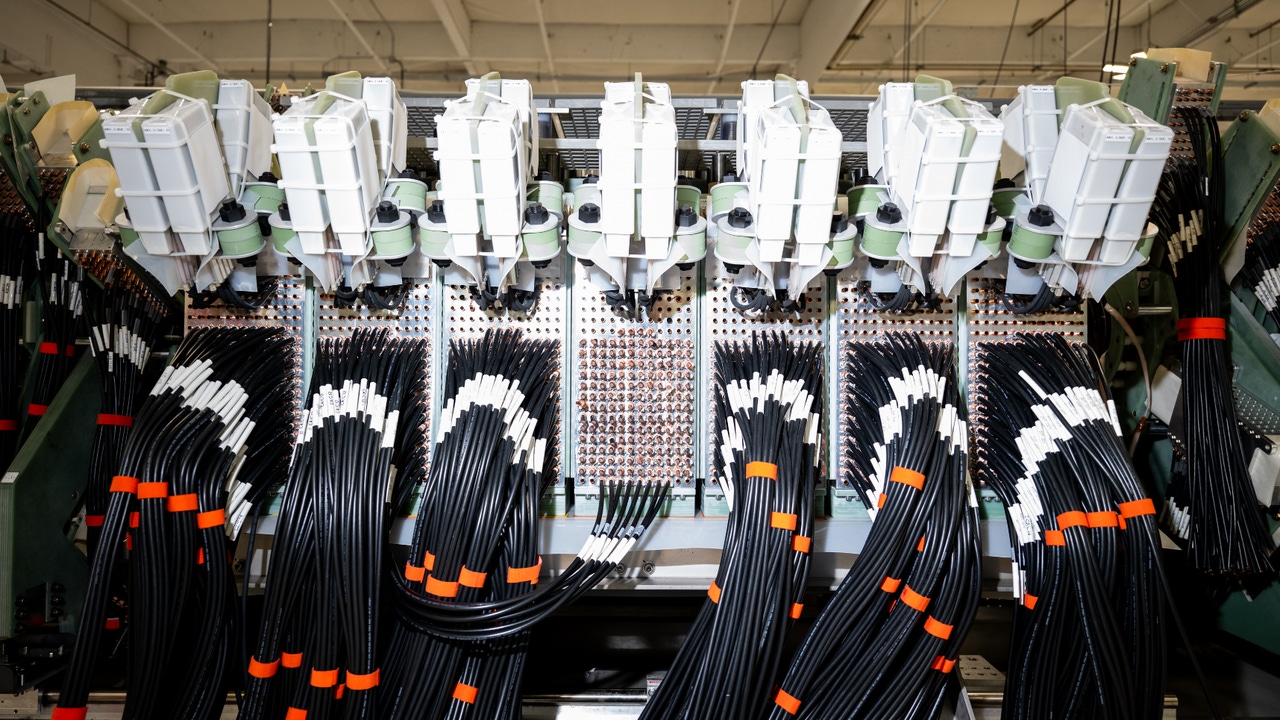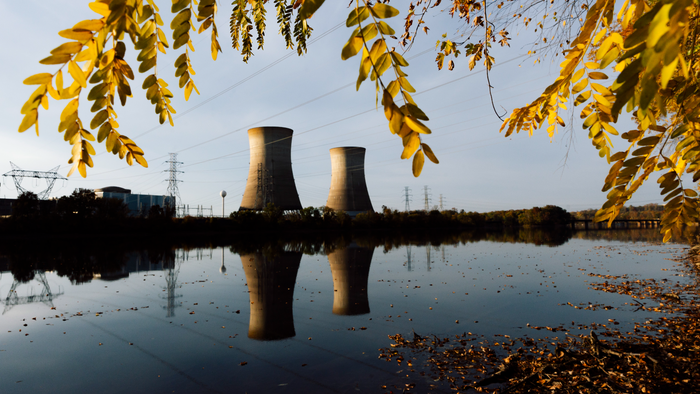Energy-Hungry AI Firms Bet on These Moonshot TechnologiesEnergy-Hungry AI Firms Bet on These Moonshot Technologies
The immense electricity needs of data centers have alarmed the power sector. These technologies promise huge amounts of new energy – at a steep cost.
December 31, 2024

Technology companies racing for advantage in artificial intelligence are struggling to find enough electricity to supply data centers – those massive, windowless buildings that contain thousands of computers running at once. A single facility often requires an entire city’s worth of energy. Data centers are projected to consume as much as 17 percent of all U.S. electricity by 2030.
With energy shortages threatening AI progress, tech leaders are investing in moonshot projects that aim to deliver huge amounts of power in just a few years. In many cases, these planned new energy sources would not even patch into existing power grids. Instead, they would feed directly into the data centers (and, in some cases, other nearby industrial plants) under exclusive agreements.
The Washington Post published articles this year on the rapid growth of data centers and the impacts they are having on communities, energy supplies and the climate. Here are six projects that provide a glimpse of how the AI energy future might look:
Green Hydrogen Towering in the Wilderness
Project Nujio’qonik, Newfoundland
In theory, green hydrogen could solve a lot of the AI industry’s energy challenges. The idea is to transform large amounts of wind or solar power into hydrogen fuel, which acts like a battery, storing the energy to be burned and turned into electricity after the wind dies down or the sun has set. The result: 24/7 power just as reliable as a nuclear or gas plant. The advantage for the climate: When you burn hydrogen, the main by-product is clean water. Subsidies in the United States and Canada aim to bring down the cost of this exceedingly expensive technology.
Several tech companies are looking at remote locations for hydrogen projects as they mull moving data center operations off the power grid, away from populations centers and into places where there is abundant renewable energy and room to build. A prime example, World Energy’s Project Nujio’qonik in Newfoundland, would harness the steady shoreline winds to generate electricity equivalent to the amount used by a few millions of homes. A large-scale data center would be on-site, potentially along with another energy-hungry industrial facility, such as an iron ore processing plant.
Reviving a Notorious Nuclear Plant
Three Mile Island, Pennsylvania

Tech companies are eager to revive the nuclear industry. It has the potential to provide large amounts of zero emissions power, around the clock. Just how serious they are became clear when Microsoft struck a deal to help bring the Three Mile Island nuclear plant out of retirement. The plant is a symbol of the industry’s misfortune: The 1979 partial meltdown of one of its units was the worst nuclear accident on U.S. soil. The premature closure, in 2019, of its other unit was precipitated by difficulty competing with cheaper natural gas energy. Now, Microsoft and Three Mile Island owner Constellation Energy hope to turn the plant into a symbol of nuclear’s rebirth.
Under the deal the two companies worked out, Microsoft would purchase all of the energy the plant generates for as long as 20 years. The firms would not disclose the price Microsoft is paying, but analysts say the energy will be considerably more expensive than other available power. It will all be fed into the regional power grid. Amazon is exploring a similar deal with another nuclear power plant in Pennsylvania. Hurdles remain, along with unresolved questions about where to store high-level radioactive waste.
A Battalion of Batteries
Edwards & Sanborn Solar Project, Mojave Desert, California
Another way to turn solar power into an always-on energy source is by pairing it with giant batteries. They store excess electricity and allow it to be used after sundown or on cloudy days. Battery-makers are racing to bring their costs down, in an effort to make these kind of systems more affordable and efficient.
The Edwards & Sanborn installation in the Mojave Desert offers a look at the direction many tech companies are heading, as well as the immense amount of resources and land it can take to power a large-scale data center this way. The project includes 1.9 million solar panels sprawled across a barren landscape with abundant sunshine. They sit alongside 120,000 batteries housed in metal structures resembling shipping containers. Edwards & Sanborn generates about the amount of electricity required to operate one of Meta or Google’s larger data centers.
Chasing the Holy Grail
Helion Fusion, Washington state
Harnessing atomic fusion, the same power generated by the collision of atoms that powers the sun, is the holy grail of clean energy. Scientists have been trying to do this since the Eisenhower administration in the 1950s, seeing promise for abundant, cheap, zero-emission energy. But engineering challenges are immense and have defied solutions. It requires sustaining the reaction of atoms as they are fused in a magnetic chamber, capturing the energy from the collisions and then channeling that energy into a usable form. And to make it commercially viable, more energy must be produced than is put in.
.jpg?width=700&auto=webp&quality=80&disable=upscale)
Helion’s exterior in Everett, Washington. Credit: Chona Kasinger for The Washington Post
Fusion start-up Helion, backed by OpenAI CEO Sam Altman, claims it will be generating usable electricity from fusion by 2028. Scholars in the field are deeply skeptical, saying fusion start-ups have fallen short on such promises for years. Nonetheless, Microsoft has bet big on Helion with a deal to purchase fusion energy for a data center in Washington state. Several other fusion companies are hoping for breakthroughs. Virginia is betting a firm called Commonwealth Fusion Systems will be able to generate enough electricity at a planned plant near Richmond to power 150,000 homes by the early 2030s.
Nuclear, Downsized
TerraPower, Wyoming
Tech companies also are attempting to reinvent nuclear power. Their goal is to produce smaller, nimbler fission reactors that can be efficiently installed alongside data centers. The reactors are cooled with sodium instead of water. The most prominent of these projects was launched by a company led by Microsoft co-founder Bill Gates, TerraPower. It claims its advanced reactors, which would hold energy in a molten salt storage system, will be exponentially safer than legacy models and create less waste. Nonproliferation experts are skeptical of the claims.
There are questions about whether these kinds of reactors can be manufactured and deployed quickly. TerraPower has already broken ground at its planned power plant on the property of a shuttered Wyoming coal plant. It does not, though, have a license for its reactor, and regulatory reviews may take years.
Digging Deep Into the Earth’s Crust
Fervo Enhanced Geothermal, Utah and Nevada
Fracking is typically associated with extracting fossil fuels, which contribute to global warming, from the earth. But fracking technology has unleashed a flurry of excitement around next-generation geothermal energy, which harnesses heat from deep in the Earth’s crust to generate power. Backed by Google and the U.S. government, Fervo Energy is using fracking tools in a bid to generate large volumes of energy. A pilot project in the Nevada desert confirmed the zero-emissions technology is viable.
Now, Fervo is drilling in the Utah high desert with the aim of generating the amount of power that would rival a pair of nuclear plants. The Biden White House sees potential for dozens of such projects, and the enthusiasm is unlikely to wane when Donald Trump takes office. Trump’s pick to lead the Department of Energy, Chris Wright, is a financial backer of Fervo through the company he founded, Liberty Energy.
About the Author
You May Also Like









